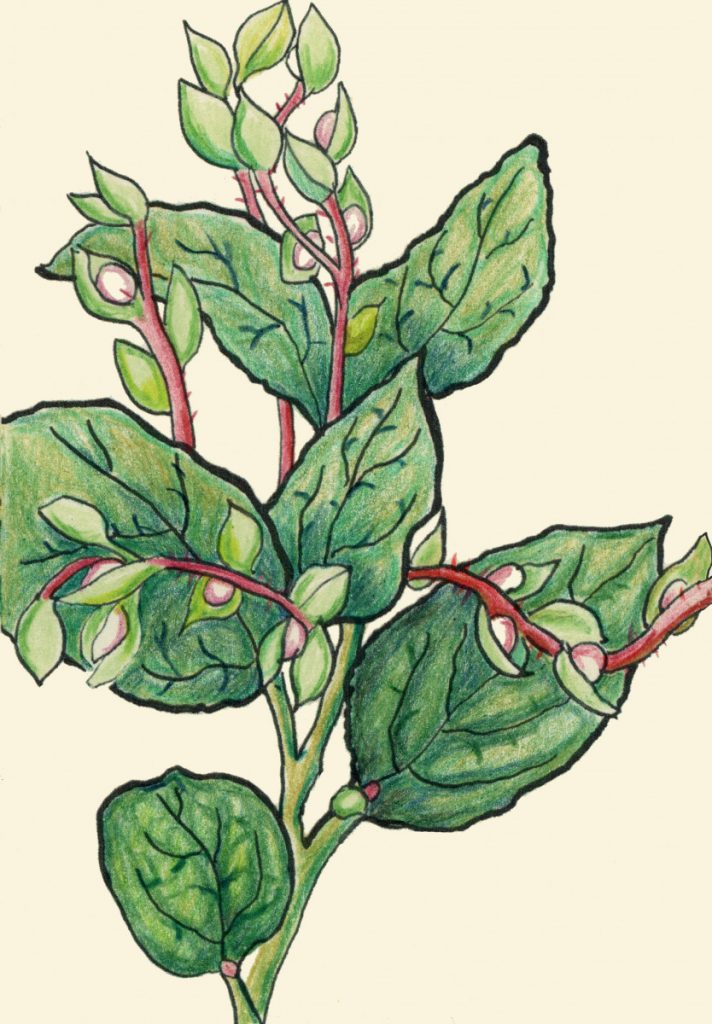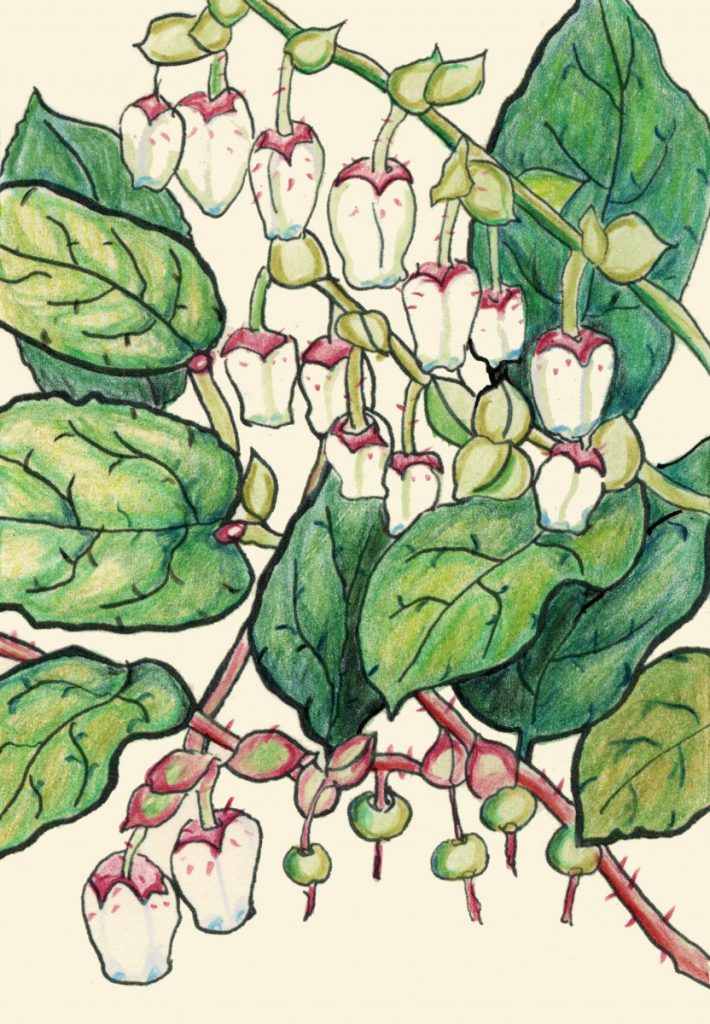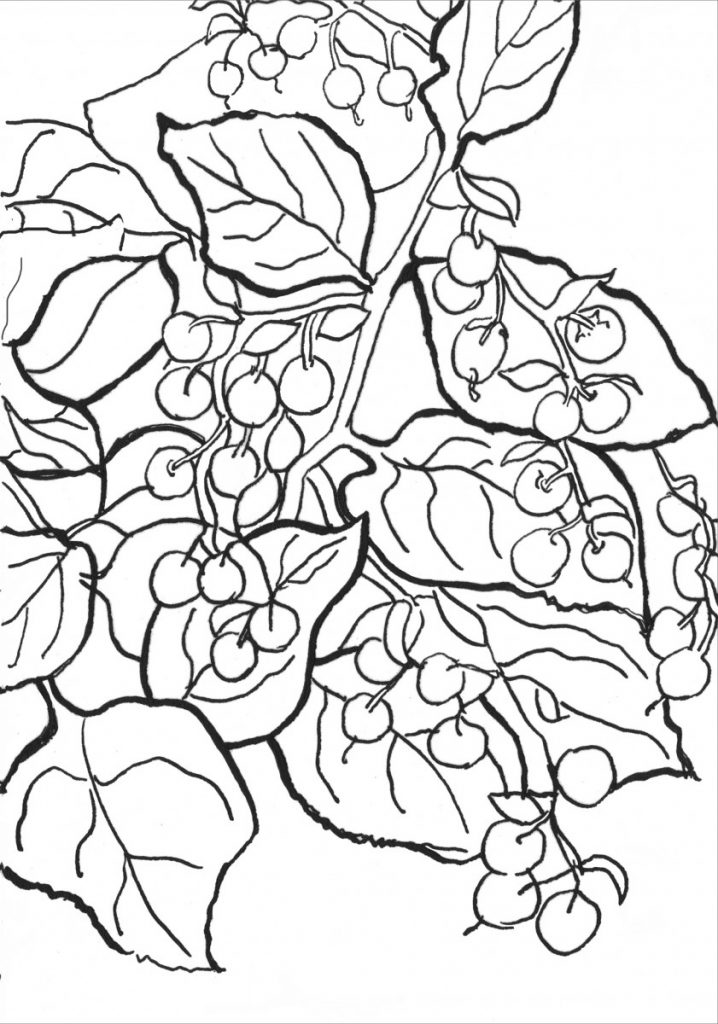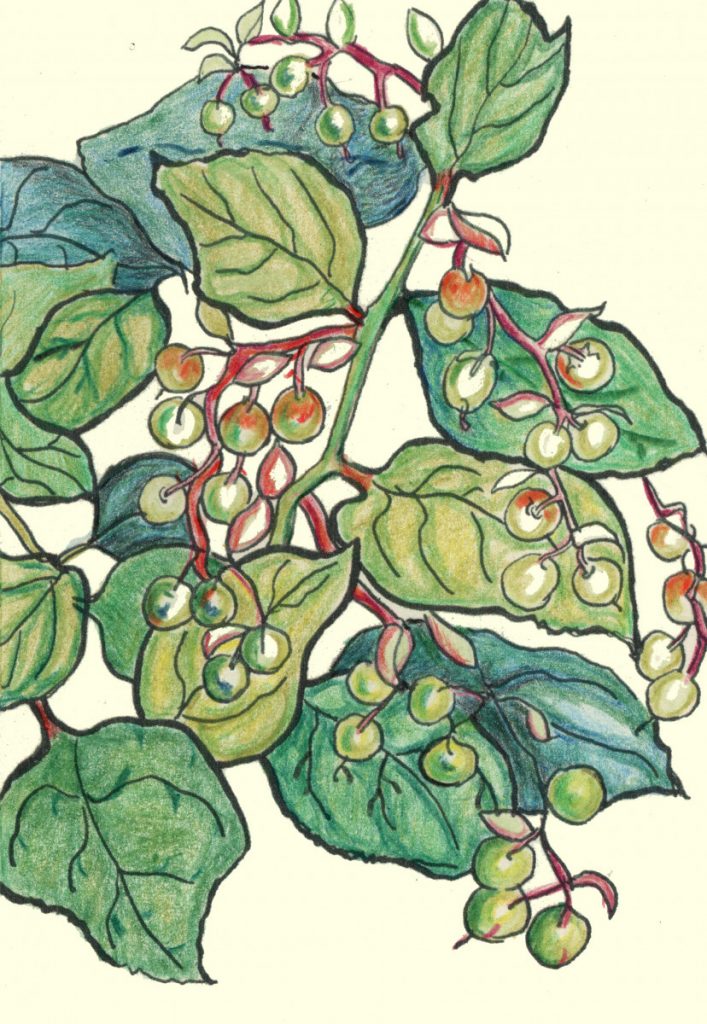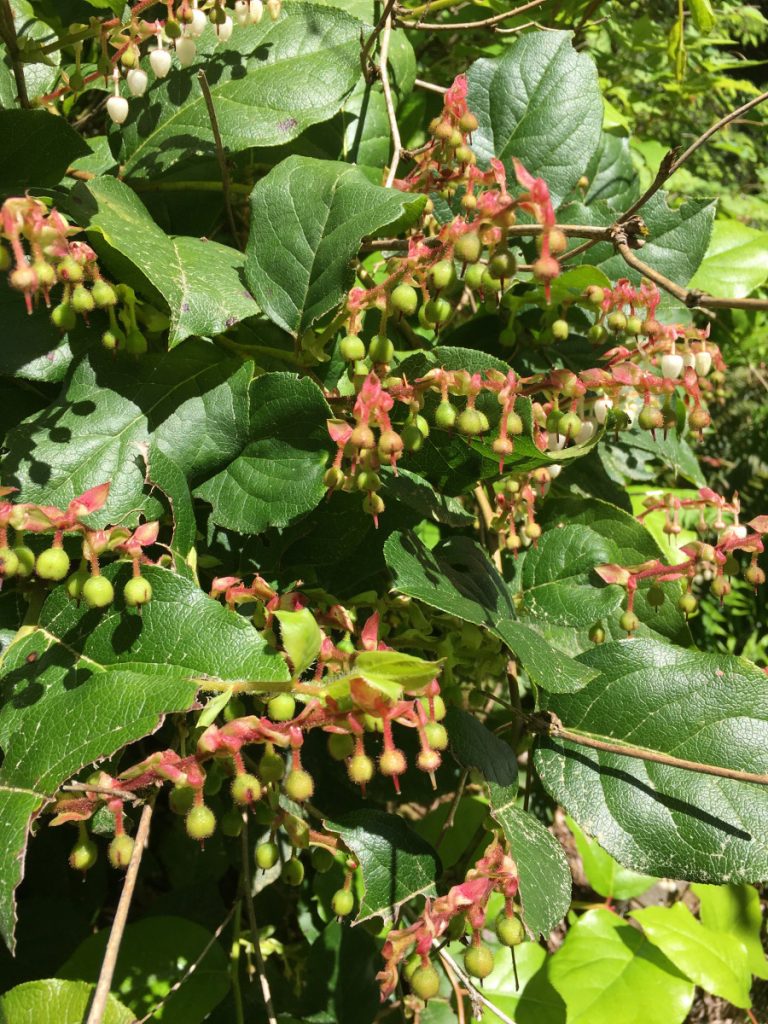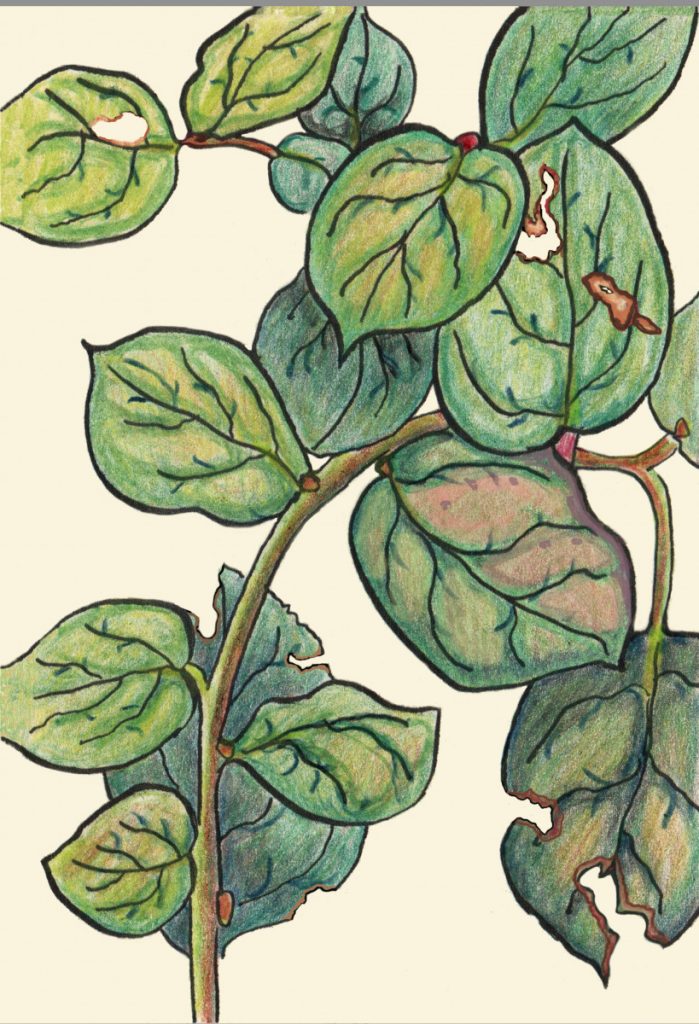Lushootseed Name for Salal berries: t’áqa (Click Here to Listen)
Scientific Name: Gaultheria shallon
Pronunciation:
Salal is a versatile evergreen shrub that grows 2-5 feet tall and 3-8 feet wide. Salal grows in coniferous forests and clearings and while a bit difficult to transplant, once established, it can grow into dense thickets providing shelter to birds and small mammals. It prefers partial to full shade and moist to dry soils.
In the spring, buds and new leaves emerge on the Salal plant.
The buds blossom into round bell-shaped flowers. Bees, butterflies and hummingbirds feast on Salal flower nectar.
In summer, the blossoms form into green berries that slowly ripen into plump purple fruits by mid-summer.
For Coast Salish, Lushootseed speaking people, August was known as pəd√t’áqa, Salalberry season. (Click to Listen) The berries stay on the plant into the fall.
The fruits feed many birds such as Spotted Towhees, American Robins, Grouse, Band-tailed Pigeons. Squirrels, chipmunks, foxes, coyotes, and black bears eat the fruits.

The Salal leaves provide shelter for birds, and small mammals. Deer browse on the twigs. Salal is also the host plant for Brow Elfin Butterfly larvae. You can see below the evidence of organisms feeding on the Fall Salal leaves.
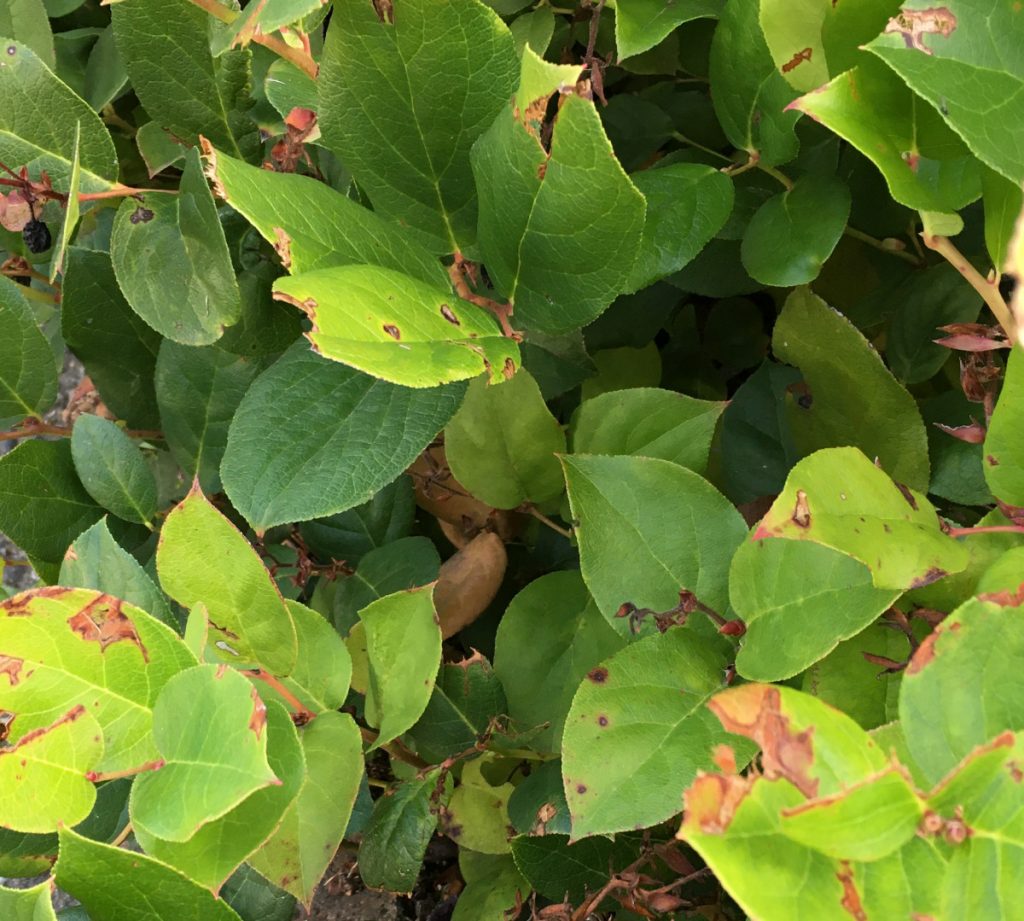
For more detailed information and photos of Vine Maples go to the Washington Native Plant Society’s Starflower Herbarium
Another good resource is the Oregon State University Landscape Plants Website: https://landscapeplants.oregonstate.edu/plants/gaultheria-shallon
The University of British Columbia Forestry Faculty have made a video about Salal. Click here to view.
To see a Salal Plant, go to the Tacoma Metro Parks Native Plant Garden at Point Defiance Park. Click here for directions, a walking guide and information. https://www.metroparkstacoma.org/place/northwest-native-garden/
Another good place to see Salal is at Snake Lake, a part of the Tacoma Nature Center. Click here for directions and information. https://www.metroparkstacoma.org/place/tacoma-nature-center/



